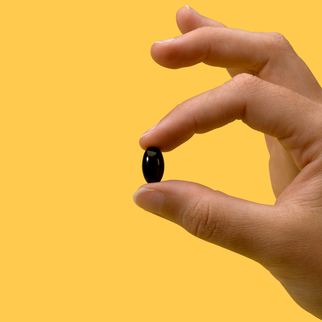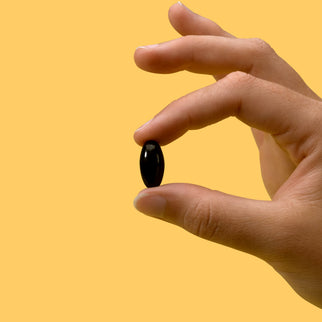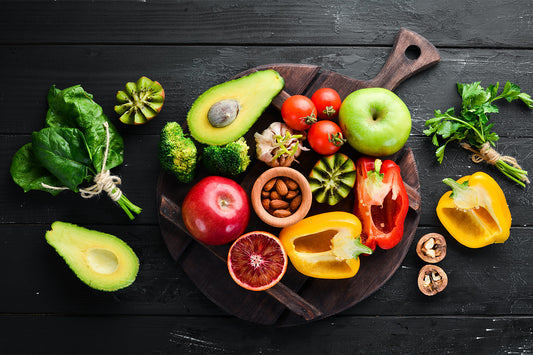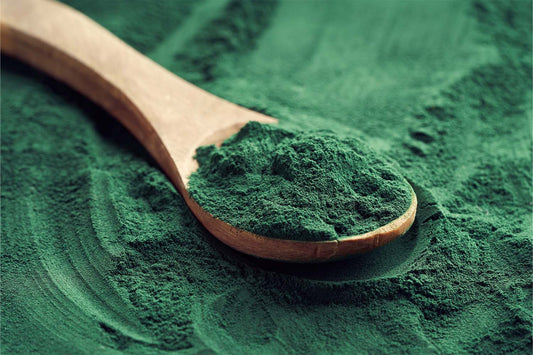If you know anything about the world of dietary fats, you know things can get confusing. There is plenty of information about which fats are good and which are not so good — but we can dive even deeper into the different types of fats by looking at their chemical makeup.
Fats are made up of different atoms that form chains, and this chain length makes a difference in the fats that we include in our diet. Understanding the chemical makeup of these fatty acids helps to give us a better understanding of the foods we choose in our diets and how they can support our health.
What Are Long-Chain Fatty Acids?
Long-chain fatty acids are healthy fats with 18 to 22 carbons — or more. Long-chain fatty acids consist of two types of unsaturated fatty acids — monounsaturated fatty acids and polyunsaturated fatty acids (PUFAs). There are also very long-chain fatty acids, like DHA and EPA, which typically have more than 22 carbons.
Monounsaturated fatty acids and PUFAs differ in their chemical structure as monounsaturated fats have a single carbon bond and PUFAs have double bonds. There are two common types of long-chain polyunsaturated fatty acids — omega-3s and omega-6s.
Both of these families of polyunsaturated fatty acids can be broken down further into additional types of essential fats. The two key omega-3 fatty acids are docosahexaenoic acid (DHA) and eicosapentaenoic acid (EPA). Meanwhile, the most common omega-6 fatty acids are linoleic acid, gamma-linolenic acid, and arachidonic acid. Oleic acid is an example of an omega-9 fatty acid.
Long-chain polyunsaturated fatty acids play a few valuable roles in the body. For one, they can act as a source of energy, but these essential fatty acids can also play a strong part in the growth and development of cells.
For example, both omega-3s and omega-6s can help support proper levels of enzymes in the body that promote lipid metabolism and synthesis. In other words, they can help to support the construction of valuable cells made of fats and phospholipids.
What Are the Benefits of Consuming Long-Chain Fatty Acids?

Consuming long-chain and very long-chain fatty acids through our diets could provide many health benefits.
Long-chain and very long-chain lipids or fats act as building blocks for cells in the body, helping to form cell membranes. In doing so, these fats help influence the way that cells in the body interact with each other.
Because they have such a valuable role in the body, consuming these fatty acids may offer many potential health benefits, including:
- Supporting healthy blood pressure
- Helping to maintain low-density lipoprotein (LDL) cholesterol levels already within a healthy range
- Supporting blood triglyceride levels already within the normal range
- Supporting overall heart health
- Supporting healthy joints
- Supporting eye health and development.
In our everyday diets, it is a good idea to maintain a balance of both very long-chain omega-3 and omega-6 fatty acids. In a Western diet, we often consume as much as ten times more omega-6 than omega-3, but research shows that a better omega-6 to omega-3 ratio is between 4 to 1 and 2 to 1. The best way to obtain a better ratio of these two nutrients is not to eat less omega-6, but to eat more omega-3s — specifically DHA and EPA.
ALA is a precursor to very long-chain fatty acids DHA and EPA, as the body can synthesize both fatty acids when consuming ALA. However, the rate of biosynthesis — aka the body’s ability to chemically build the very long-chain fatty acids — is too low to provide the body with the amount it needs.
To realize the potential benefits of these very long-chain fatty acids, consider using omega-3 (specifically DHA and EPA) and omega-6 fats to replace saturated fats like palmitic acid in your everyday diet.
What Are Short-Chain Fatty Acids?
Similar to long-chain and very long-chain fatty acids, short-chain fatty acids are named based on their chemical composition. Short-chain fatty acids are those with fewer carbon atoms — usually between two and six of them. Many short-chain fatty acid levels are found in the human gut and may actually support homeostasis in the intestines.
Some common examples of short-chain fatty acids are:
- Acetic acid
- Butyric acid
- Propionic acid
- Formic acid
Short-chain fatty acids are capable of providing potential health benefits as well, both on their own and by contributing to the synthesis of longer-chain fatty acids.
What About Medium-Chain Fatty Acids?
Finally, in the middle of the range of fatty acids are medium-chain fatty acids. Medium-chain fatty acids contain between six and 12 carbon atoms, and some sources of medium-chain fatty acids are coconut oil and palm kernel oil.
Medium-chain fatty acids are less of a factor in our daily diets. Still, examples of these lipids include:
- Caproic acid
- Caprylic acid
- Capric acid
- Lauric acid
What Are the Most Valuable Long-Chain Fatty Acids?
Essential fatty acids DHA and EPA are the most beneficial forms of very long-chain fats you can consume in your diet. You may often hear the term “omega-3s” used to discuss ALA, DHA, and EPA, but it is important to understand the differences when it comes to your diet.
Although they are all under the same umbrella, DHA and EPA omega-3s are important to distinguish from ALA omega-3s since they are far more influential on the health and function of the body.
You can consume ALA omega-3s in your diet through plant oils, nuts, and seeds, as ALA is abundant in a standard Western diet. However, the low rate of synthesis of ALA to DHA and EPA means that you need to consume those very long-chain fatty acids separately.
How To Consume More Very Long-Chain Fatty Acids

Getting more very long-chain fatty acids in your diet can support your health in several ways. With all the potential benefits of consuming very long-chain fatty acids, it is important to consume more in your diet. Since the synthesis of very long-chain fatty acids by the body is not the most effective, you can aim to find high concentrations of these in a few key food sources.
Fish
Eating fatty fish is one of the most well-known options for consuming very long-chain fatty acids. Fatty, oily fish like salmon, mackerel, tuna, and sardines are the most omega-3-rich options. Eating fish about two to three times a week will provide the necessary amounts of DHA and EPA omega-3s.
However, for people who don’t have the time to cook fish or don’t enjoy the taste of fish, this is not the best option.
Fish Oil Supplements
Fish oil supplements provide a convenient way to obtain DHA and EPA omega-3s, consolidating the nutrients into a small capsule or oil that can be taken by a spoonful. Many people choose to consume fish oil daily, or they turn to a similar but slightly more expensive alternative, krill oil.
Unfortunately, though, fish and krill oil still isn’t a viable option for people with seafood allergies or a distaste for fish. Fish and fish supplements also come with the unfortunate risk of potential marine contaminants.
Algae
Like fish oil supplements, algae provides a convenient option for providing both EPA and DHA omega-3s. However, algae supplements also have the added advantage of being entirely plant-based, which makes them a better supplement option for people who follow a plant-based diet or are allergic to seafood.
At the same time, people who consume algae are able to avoid the unpleasant fishy burps and bad breath that comes with fish oil.
Algae also serves as the foundational source of omega-3 in the food chain, which means that fish are likely rich in the nutrient because they consume large amounts of algae in their diets. This position in the food chain means there may be more benefits to consuming algae directly.
One of the benefits is that the omega-3s in algae are consumed by the body at a rate of 1.7 times better than those in fish or krill oil, meaning that your body is able to put them to use faster and better.
For a reliable daily source of algae, you can turn to an iwi life omega-3 supplement. This supplement provides you with 250 mg of combined DHA and EPA omega-3s, allowing you to support your overall health and wellness with a single softgel.
Boost Your Diet With Very Long-Chain Fatty Acids
Knowing the difference between long-chain or very long-chain fatty acids and short-chain fatty acids can help you make the right choices when building your diet. Consuming very long-chain fatty acids may provide a wide range of potential health benefits, from promoting overall heart health to supporting the growth and development of cells throughout the body.
Thanks to the help of iwi life, you can start including more very long-chain fatty acids in your diet with a simple and straightforward algae-based supplement. Start with our omega-3 supplement to begin boosting your nutrition.
Explore the complete family of iwi life algae-based omega-3 supplements to see all the ways long-chain and very long-chain fatty acids can support your health.
Sources:





















